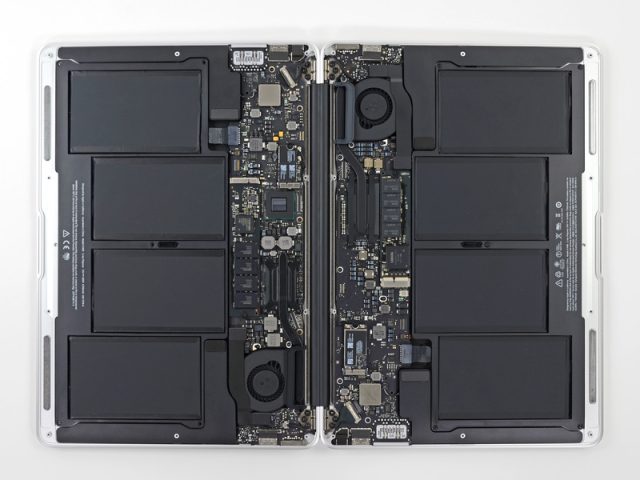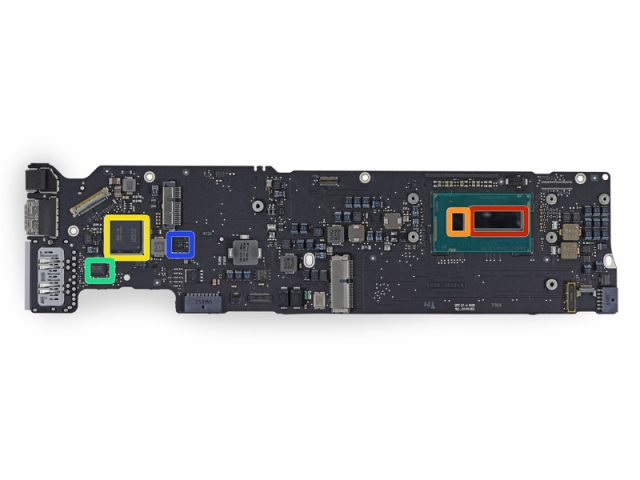
We already know the basic details about Apple's new 2013 MacBook Air. It includes a 1.3GHz fourth-generation Intel Core CPUs (codenamed Haswell) with a faster Intel HD 5000 integrated GPU and the laptop also gets faster 802.11ac wireless networking.
For those of you who can't rest until you know everything about your hardware, iFixit has done its customary teardown of the 13-inch model to see exactly what's new about the updated MacBook Air. Once you get past the new CPU, the answer is "not much"—externally the 2013 Air is identical to its predecessor, and the general layout on the inside is much the same as well. There are a few minor but significant differences, however.
First, Apple is doing all it can to hit its projected 12-hour battery life figure: the 2013 Air now includes a 7150mAh battery, up very slightly from the 6700mAh battery in the 2012 Air. This, combined with Haswell's power-saving innovations, should improve runtime over the previous model by a bit.
On the topic of Haswell, as we reported when the architecture was introduced, the 15W Ultrabook CPUs that Apple is using integrates the chipset (or "Platform Controller Hub") into the same package as the CPU/GPU die. The two dies are still separate, as you can see in the photo below (the CPU/GPU die is the long one with the red box around it; the PCH is the one in orange), but they no longer require entirely separate chips to integrate.

The final major change is that, like the new Mac Pro, the 2013 MacBook Air uses a PCI Express-based interface for the Samsung-based SSD rather than the 2012 model's SATA III interface. This does remove a bottleneck in the system—the 6.0 Gbps transfer speeds of SATA III are actually getting a little slow for modern SSD controllers and flash memory—but it has the side effect of rendering the 2013 Air's SSDs incompatible with previous models (and vice-versa). After-market upgraders will need to wait on someone like OWC to offer updated drives for the new Air.
We'll be putting all of these internal components to the test when we review the new MacBook Air in the coming weeks. In the meantime, those of you hungry for minutiae should read the full iFixit teardown for the details of every single thing on the new Air's motherboard.
reader comments
56